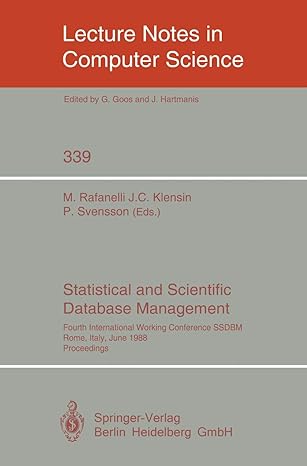Question
King A has problems to administer his realm. His court contains n knights and he rules over m counties. The knights differ in their abilities
King A has problems to administer his realm. His court contains n knights and he rules over m counties. The knights differ in their abilities and local popularity: Each knight i can oversee at most qi counties, and each county j will revolt unless it is overseen by some knight in a given subset Sj {1, . . . , n} of the knights. Only 1 knight can oversee a county, to prevent conflicts between the knights.The king discusses the problem with his court magician G.
Show how G can use the Max-Flow algorithm to efficiently compute an assignment of the counties to the knights that prevents a revolt, provided that one exists. How can he determine whether the algorithm was successful? Prove the complexity of this algorithm, in terms of some function F(v, e), where F(v, e) denotes the running time of a Max-Flow algorithm on a graph with v vertices and e edges.
Suppose that G runs the algorithm from above, but it does not produce a solution that fits the constraints and prevents all counties from revolting. King A demands a explanation. While he believes that the algorithm (and proof) is correct, he doubts that G has executed the algorithm correctly on the large given instance. G needs to convince the king that no suitable assignment is possible under the given constraints. How can G prove this, based on the structure of the Max-Flow problem? (Note that the argument must work for every instance where there is no solution, not just a particular instance.)
Step by Step Solution
There are 3 Steps involved in it
Step: 1

Get Instant Access to Expert-Tailored Solutions
See step-by-step solutions with expert insights and AI powered tools for academic success
Step: 2

Step: 3

Ace Your Homework with AI
Get the answers you need in no time with our AI-driven, step-by-step assistance
Get Started


